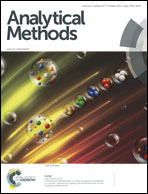Real-time monitoring of DNA hybridization for rapid detection of Vibrio cholerae O1
Abstract
Effective control and treatment of the severe diarrheal disease caused by Vibrio cholerae requires rapid detection of the bacteria. For this purpose, an optical DNA sensor has been developed to detect real-time DNA hybridization after amplifying the bacterium's ctx gene. This sensor was prepared by immobilizing the 5′-biotinylated oligonucleotide probe containing the ctx sequence on the surface of a poly[methyl methacrylate] (PMMA) prism, using neutravidin. A Cy5-labelled primer for the ctx gene was used for PCR amplification. The PCR amplicon was applied to the active surface of the ctx gene chip to detect hybridization, and evanescent field light of 635 nm revealed 680 nm emission light from the Cy5-labelled DNA target hybridized to the DNA probe. It was estimated that the lower limit of detection of the Cy5-labelled DNA target was 0.2 nM, and the fluorescence signal detected by this sensor chip showed that all 12 V. cholerae O1 were positive for the ctx gene. Of the 12 bacterial strains not belonging to the cholera strains, none produced amplicons with a ctx-specific primer. Within minutes after PCR, this optical biosensor system can detect the ctx gene of V. cholerae O1 with high specificity and sensitivity.


 Please wait while we load your content...
Please wait while we load your content...